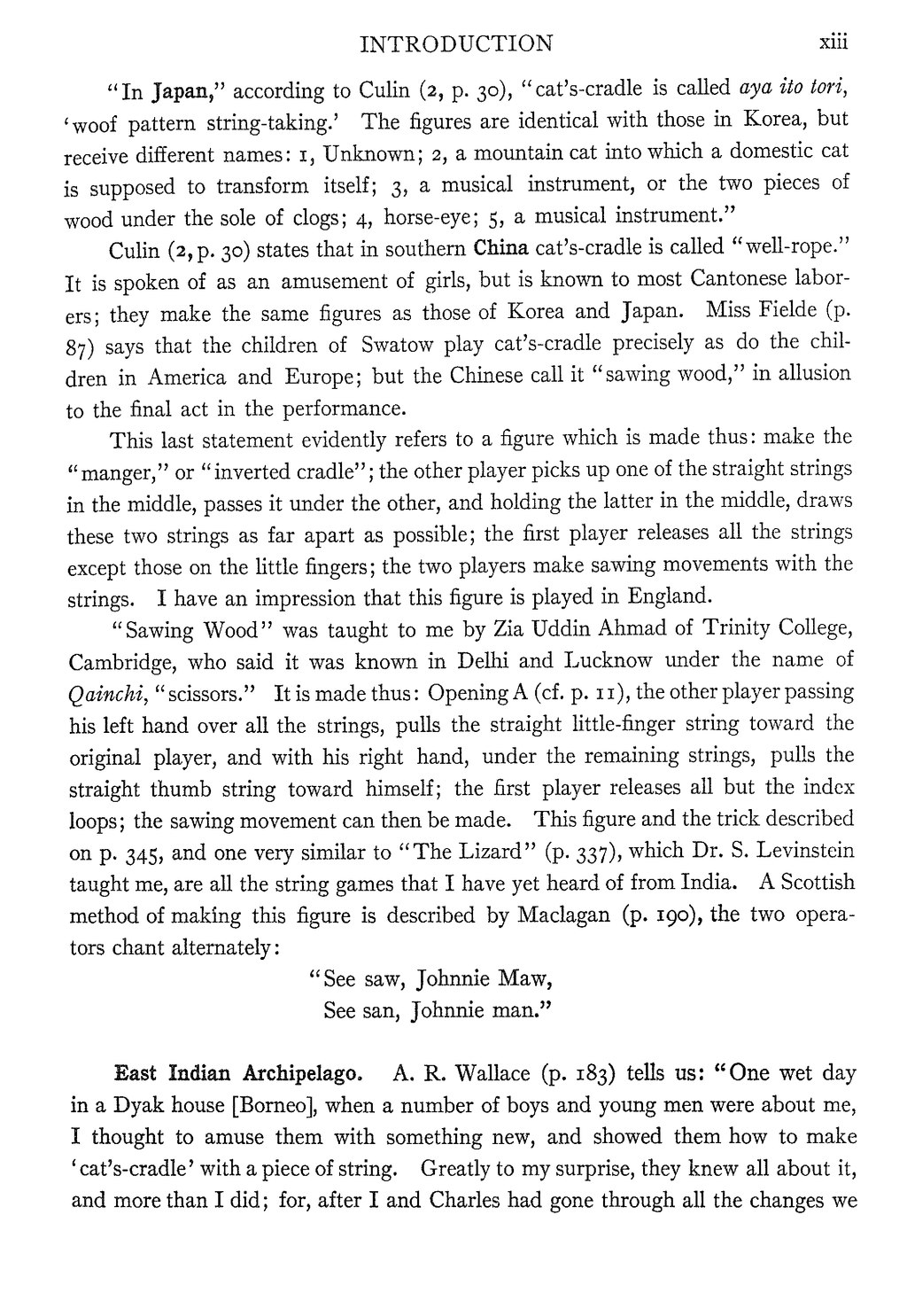"In Japan," according to Culin (2, p. 3o), "cat's-cradle is called aya ito tori, 'woof pattern string-taking.' The figures are identical with those in Korea, but receive different names: 1, Unknown; 2, a mountain cat into which a domestic cat is supposed to transform itself; 3, a musical instrument, or the two pieces of wood under the sole of clogs; 4, horse-eye; 5, a musical instrument."
Culin (2, p. 30) states that in southern China cat's-cradle is called "well-rope." It is spoken of as an amusement of girls, but is known to most Cantonese laborers; they make the same figures as those of Korea and Japan. Miss Fielde (p. 87) says that the children of Swatow play cat's-cradle precisely as do the children in America and Europe; but the Chinese call it "sawing wood," in allusion to the final act in the performance.
This last statement evidently refers to a figure which is made thus: make the "manger," or "inverted cradle"; the other player picks up one of the straight strings in the middle, passes it under the other, and holding the latter in the middle, draws these two strings as far apart as possible; the first player releases all the strings except those on the little fingers; the two players make sawing movements with the strings. I have an impression that this figure is played in England.
"Sawing Wood" was taught to me by Zia Uddin Ahmad of Trinity College, Cambridge, who said it was known in Delhi and Lucknow under the name of Qainchi, "scissors." It is made thus: Opening A (cf. p. 11), the other player passing his left hand over all the strings, pulls the straight little-finger string toward the original player, and with his right hand, under the remaining strings, pulls the straight thumb string toward himself; the first player releases all but the index loops; the sawing movement can then be made. This figure and the trick described on p. 345, and one very similar to "The Lizard" (p. 337), which Dr. S. Levinstein taught me, are all the string games that I have yet heard of from India. A Scottish method of making this figure is described by Maclagan (p. 190), the two operators chant alternately:
"See saw, Johnnie Maw,
See san, Johnnie man."
East Indian Archipelago. A.R. Wallace (p. 183) tells us: "One wet day in a Dyak house [Borneo], when a number of boys and young men were about me, I thought to amuse them with something new, and showed them how to make 'cat's-cradle' with a piece of string. Greatly to my surprise, they knew all about it, and more than I did; for, after I and Charles had gone through all the changes we
